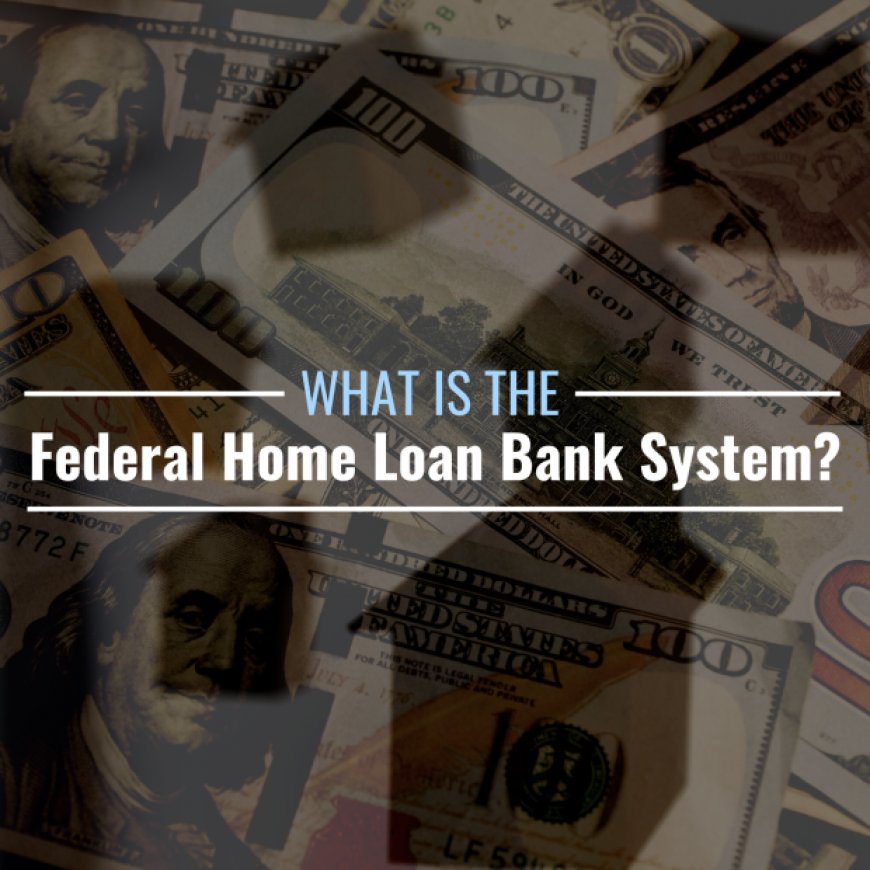What Is the Federal Home Loan Bank System? Definition & History
The Federal Home Loan Bank (FHLB) system is a group of government-sponsored enterprises that provides funding to financial institutions with the purpose of lending to Americans who want to purchase homes as their residence. Members of the system, also referred to as FHLBanks, include savings and ...


What Is the Federal Home Loan Bank System?
The Federal Home Loan Bank (FHLB) system is a group of government-sponsored enterprises that provides funding to financial institutions with the purpose of lending to Americans who want to purchase homes as their residence. Members of the system, also referred to as FHLBanks, include savings and loans associations (thrifts), commercial banks, credit unions, insurance companies, and certified community development financial institutions.
At the end of the first quarter of 2023, FHLBs had $1.56 trillion in total assets.
What Are the Main Functions of the Federal Home Loan Bank System?
The mission of the FHLB, which operates under the supervision of the Federal Housing Finance Agency (FHFA), is to support the housing finance market while maintaining financial stability. Each district of the FHLB is a regional cooperative, in which member financial institutions can get funding and advances for mortgage lending from the FHLB within their jurisdiction..
The banks are also involved in various programs for affordable housing initiatives, including the Mortgage Partnership Finance Program.
What Are the Districts of the Federal Home Loan Bank System?
The 11 Federal Home Loan Bank Districts are located in major U.S. cities: New York, Boston, Pittsburgh, Cincinnati, Atlanta, Chicago, Indianapolis. Dallas, Des Moines, Topeka, and San Francisco. The district banks cover the 50 states as well as U.S. territories Puerto Rico, Guam, Virginia Islands, and the Northern Mariana Islands.
The system is self-funded and also draws from the profits of the operations and activities of the 11 banks. Each FHLB is a separately chartered cooperative with its own board of directors and management.
Each FHLB is owned by its member institutions, which have equity stakes in the FHLB and must reside in the FHLB's district, according to the Federal Reserve.
How Does Mortgage Lending Through the Federal Home Loan Bank System Work?
Every bank needs funding to provide loans. In the FHLB, investors buy FHLB debt that is issued by a single entity known as the Federal Home Loan Banks Office of Finance. That money then works its way into the 11 district banks, which in turn, dispense those funds to members/borrowers.
For example, $5.5 billion in debt is raised by the Office of Finance. The office then distributes $500 million in equal amounts to the 11 FHLBs. The FHLB New York district could then disperse part of its funding to banks such as JPMorgan Chase (NYSE: JPM) or small savings and loans institutions for mortgage lending.
A Brief History of the Federal Home Loan Bank System
The system was established with 12 district banks under the Federal Home Loan Act in 1932 to provide access to credit to Americans for housing at a time during the Great Depression when credit wasn’t easily available. Membership in the FHLBs in the beginning was limited to thrifts and insurance companies, and early on, the FHLBs helped to stabilize these financial institutions with the sale of bonds for funding as well as advances for mortgage lending.
During the financial crisis of 2007–2008, the FHLBs provided immediate funding in the billions of dollars to member institutions that faced liquidity problems. The system served as a quasi lender of next-to-last resort (after the Federal Reserve) to banks, thrifts, insurance companies, and credit unions that otherwise could have failed due to the collapse of the housing market. The FHLB set up funding with the collateralization of mortgages and mortgage-related assets.
The Housing and Recovery Act of 2008 led to significant reforms within the FHLB. Regulation over the FHLB was transferred from the Office of Thrift Supervision to the newly created FHFA. The FHLB Seattle district merged with the FHLB Des Moines district in 2015 in the aftermath of the financial crisis, following failures to restore the Seattle district’s capital due to losses on its securities investment. That consolidation reduced the number of district banks to 11.
What Are the Limitations of the Federal Home Loan Bank System?
While the FHLBs can dispense billions of dollars to keep money flowing into the housing market, there are limitations on credit to financial institutions. The amount of advance credit available to each member is capped at 20% to 60% of a member’s total assets, though there can be exceptions due to a member’s creditworthiness.
Because FHLBs are highly leveraged, there is the risk of an FHLB bank not being able to meet its obligations. If that’s the case, the 10 other district banks could cover such debt.
What's Your Reaction?


























































